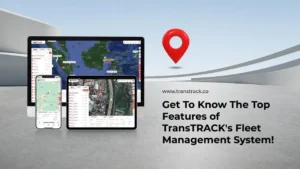Unveiling Powertrain: Functions, Components, and Types
Posted on December 10, 2024 by Nur Wachda Mihmidati

The powertrain is a crucial component in vehicles responsible for generating and transmitting power to the driving wheels. The powertrain consists of several components, including the engine, transmission, clutch, driveshaft, differential, and driving wheels.
The engine is the primary power source in the powertrain. The transmission is a system that adjusts gear ratios to transfer power from the engine to the driving wheels. The clutch is a component that connects and disconnects the power flow between the engine and the transmission. The driveshaft is a component that transfers power from the transmission to the differential, which then transfers power to the driving wheels.
Because the powertrain is one of the most important components in a vehicle, proper maintenance and care are essential to ensure optimal performance and a long lifespan.
Functions of the Powertrain
The powertrain has several primary functions in various types of vehicles, including cars, trucks, and heavy equipment. Here are some of the functions of the powertrain in these vehicles:
Functions of the Powertrain in Cars
- Provides power to move the wheels and propel the car forward or backward.
- Adjusts the speed and torque generated by the engine to match road conditions and driver demands.
- Allows the driver to select the appropriate gear for accelerating or decelerating.
Functions of the Powertrain in Trucks
- Provides power to move the wheels and transport the truck and its cargo.
- Delivers sufficient torque to handle heavy loads on the truck.
- Enables the driver to control speed and select gears to optimize fuel efficiency.
Functions of the Powertrain in Heavy Equipment
- Supplies enough power to perform necessary tasks, such as digging, lifting, or moving materials.
- Regulates speed and torque as required to handle heavy loads and optimize fuel efficiency.
- Allows the operator to choose the right gear for optimal performance.
Powertrain Components
Here are some of the components included in the powertrain:
Clutch
Connects and disconnects the power flow between the engine and the transmission. The clutch is used to smoothly engage or disengage the vehicle without damaging the transmission system.
Transmission
A system that adjusts gear ratios to transfer power from the engine to the driving wheels. The transmission allows the driver to select the appropriate gear for accelerating, decelerating, or adjusting torque based on road conditions.
Propeller Shaft
Transfers power from the transmission to the rear of the vehicle or the front driveshaft in four-wheel-drive vehicles.
Final Gear (Differential)
Transfers power from the driveshaft to the driving wheels. The final gear allows the wheels to rotate at different speeds when the vehicle is turning.
Axle Shaft
Bridges the gap between the driving wheels and the differential. The axle shaft transfers the rotation of the driving wheels to the differential.
Wheel Bearing
Allows the wheels to rotate smoothly around their axles with the appropriate load-bearing capacity.
Wheels
Maintains vehicle motion, provides stability and control, and enhances mobility on various surfaces.
Transaxle (Front Wheel Drive/FWD)
A transmission system that integrates the transmission, driveshaft, and differential in front-wheel-drive vehicles.
Transfer Case (Four Wheel Drive/4WD)
Used in four-wheel-drive vehicles to transfer power to both the front and rear wheels and enable the selection of two-wheel or four-wheel drive modes.
Types of Powertrain
Here are several types of powertrains in vehicles:
Rear-Wheel Drive (RWD)
Rear-Wheel Drive (RWD) is a type of powertrain where the engine is located at the front of the vehicle, and power is transmitted through the transmission to the rear driveshaft. RWD provides good stability and maneuverability, especially in high-performance vehicles.
Advantages of RWD
- Better balance – Since the engine and transmission are placed at the front of the vehicle, the vehicle’s weight is evenly distributed between the front and rear wheel axles. This results in better balance, especially in high-performance vehicles.
- Improved traction – RWD allows the rear wheels to receive more power than the front wheels, providing better traction when cornering or driving at high speeds.
- Ease of maintenance – Most RWD components are located at the front and rear of the vehicle, making it easier to perform repairs and maintenance.
Disadvantages of RWD
- Less stable on slippery surfaces – Because the rear wheels receive more power than the front wheels, RWD vehicles are less stable on slippery surfaces like snow or rain.
- Higher weight – Due to the additional driveshaft, RWD vehicles tend to be heavier, resulting in higher fuel consumption.
Front-Wheel Drive (FWD)
Front-Wheel Drive (FWD) is a type of powertrain where the engine is located at the front of the vehicle, and power is transmitted through a transaxle to the front driveshaft. FWD results in more fuel-efficient and lighter vehicles but offers less stability and handling of heavy loads compared to RWD.
Advantages of FWD
- Fuel efficiency – FWD, without an additional driveshaft, reduces vehicle weight and improves fuel efficiency.
- Easy to drive – FWD offers better balance due to the front placement of the engine and transmission, making it easier to drive.
- More affordable – FWD vehicles are generally more affordable than RWD counterparts.
Disadvantages of FWD
- Less stable at high speeds – Front-wheel drive vehicles can be less stable at high speeds because the front wheels both drive the vehicle and receive power from the engine.
- Limited ability to handle heavy loads – Since the front wheels drive the vehicle, FWD vehicles may struggle with heavy loads.
Four-Wheel Drive (4WD)
Four-Wheel Drive (4WD) is a type of powertrain that can send engine power to all four wheels of the vehicle. 4WD is used in off-road vehicles due to its ability to handle challenging terrains such as sand, rocks, or mud.
Advantages of 4WD
- Better traction – 4WD allows all four wheels to receive power from the engine, providing superior traction in off-road conditions.
- Handling difficult terrains – 4WD enables vehicles to navigate through challenging terrains like sandy or muddy areas.
- Improved stability – Since 4WD drives all four wheels, it offers better stability on uneven surfaces.
Disadvantages of 4WD
- Increased fuel consumption – 4WD vehicles tend to consume more fuel because all four wheels are powered.
- Higher cost – 4WD vehicles are generally more expensive than RWD or FWD counterparts.
- Less comfort – 4WD vehicles often have stiffer suspensions for off-road handling, making them less comfortable than vehicles with softer suspensions.
In conclusion, the choice of powertrain type in a vehicle depends on the user’s needs and preferences. Each powertrain type has its own advantages and disadvantages, so it’s important to consider these factors before selecting the right type of vehicle.
Case Studies and Applications
Here are some case studies and their applications on vehicles.
Power Train Application in Conventional Vehicles
This case study discusses the application of a conventional power train that uses an internal combustion engine (ICE).
Case Example: Toyota Camry (ICE)
- Power Train Specifications:
- Engine: 2.5L 4-cylinder gasoline.
- Transmission: 8-speed automatic.
- Drive: Front-Wheel Drive (FWD).
- Performance Analysis: The engine produces 203 hp with a fuel efficiency of about 14-16 km/l.
- Conclusion: Vehicles with conventional power trains remain superior in performance and durability, but have limitations in energy efficiency and exhaust emissions.
Power Train Application in Electric Vehicles (EVs)
Electric vehicles rely entirely on electric motors in the power train system, with no internal combustion engine.
Case in point: Tesla Model 3
- Power Train Specifications:
- Electric motor: Permanent Magnet Synchronous Motor (PMSM).
- Battery: 75 kWh Lithium-ion.
- Drive: All-Wheel Drive (AWD) with two electric motors.
- Performance Analysis:
- Maximum power: 283 hp.
- Range: Up to 500 km on a full charge.
- Emissions: Zero exhaust emissions.
- Conclusion: Electric power trains offer high energy efficiency, reduced exhaust emissions, and responsive performance, but challenges remain with charging infrastructure and battery costs.
Hybrid Power Train Application
A hybrid power train combines a conventional engine with an electric motor to improve fuel efficiency.
Case in point: Honda CR-V Hybrid
- Power Train Specifications:
- Engine: 2.0L i-VTEC 4-cylinder.
- Electric motor: 181 hp with lithium-ion battery.
- Transmission: e-CVT.
- Drive: Front-Wheel Drive (FWD).
- Performance Analysis:
- Combined power: 212 hp.
- Fuel efficiency: 20-23 km/l.
- Emissions: Lower than conventional vehicles.
- Conclusion: Hybrid power train systems are a transitional solution to full electric vehicles, with the advantages of fuel efficiency and good performance.
Comparison Case Study: ICE vs EV vs Hybrid
| Criteria | ICE (Toyota Camry) | EV (Tesla Model 3) | Hybrid (Honda CR-V) |
| Maximum Power | 203 hp | 283 hp | 212 hp |
| Fuel Efficiency | 14-16 km/l | Zero fuel | 20-23 km/l |
| Mileage | ± 600 km (gasoline) | 500 km (battery) | ± 900 km (gasoline + electricity) |
| Exhaust Gas Emission | High | Zero | Low |
| Operating Costs | Medium | Low | Relatively low |
Conclusion:
- EV vehicles excel in energy efficiency and environmental friendliness.
- Hybrid is the ideal solution for efficiency and longer mileage.
- ICE vehicles are still relied upon for their durability and even fuel infrastructure.
Power Train Applications in Other Industries
Apart from automotive, the power train concept is also applied in other industries, such as:
- Ship Machinery: Power train based on diesel engines and electric turbines for long-range efficiency.
- Airplane: Jet engine as a power train system to generate thrust.
- Agricultural Machinery: Modern tractors use hybrid power trains to reduce fuel consumption.
Through this case study, it is shown that the evolution of power train technology from conventional to electric and hybrid provides various solutions for energy efficiency, high performance, and reduced emissions. Each type of power train has its own advantages and challenges, depending on the needs and conditions of use.
That’s the article about powertrains in vehicles. Choosing the right type of powertrain is very important to meet the needs and desires of users, as well as to achieve optimal vehicle efficiency and performance.
To maintain the performance and efficiency of a powertrain, regular maintenance and care are essential. One way to achieve this is by using the Vehicle Maintenance System from TransTRACK. This system can monitor a vehicle’s condition in real time, provide notifications when maintenance is needed, and help optimize overall vehicle performance.
By using the Vehicle Maintenance System from TransTRACK, vehicle owners can extend the lifespan of their powertrain, improve fuel efficiency, and reduce maintenance costs. So, consider using the TransTRACK Vehicle Maintenance System to maintain the performance of your vehicle’s powertrain!
Recent Post
Topic :
 Bahasa Indonesia
Bahasa Indonesia









